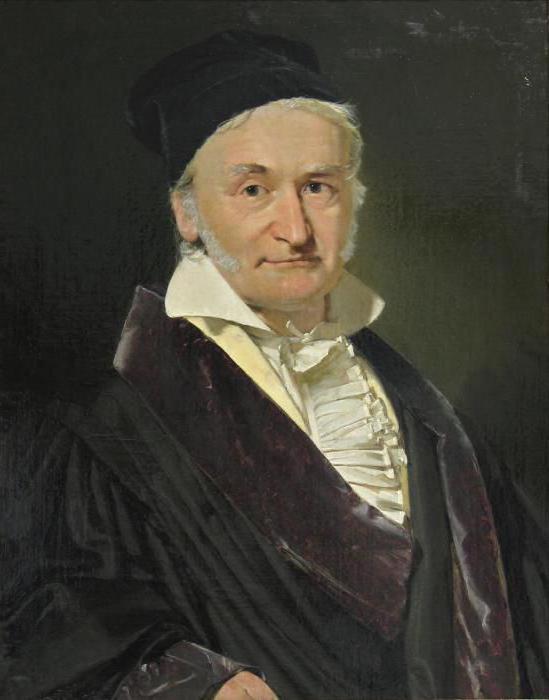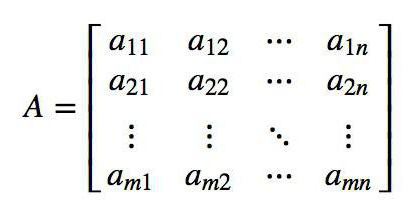Systems of linear algebraic equations. Homogeneous systems of linear algebraic equations
Back in school, each of us studied the equations and,for sure, the system of equations. But not many people know that there are several ways to solve them. Today, we will discuss in detail all methods for solving a system of linear algebraic equations that consist of more than two equalities.

History
To date, it is known that artsolve equations and their systems originated in ancient Babylon and Egypt. However, the equality in their usual form for us appeared after the appearance of the sign of equality "=", which was introduced in 1556 by the English mathematician Record. By the way, this sign was chosen for a reason: it means two parallel equal segments. Indeed, the best example of equality can not be imagined.
The founder of modern alphabeticThe notation of unknowns and the signs of degrees is the French mathematician François Viet. However, its designations were significantly different from today. For example, the square of an unknown number was denoted by the letter Q (Latin "quadratus"), and the cube by the letter C (Latin "cubus"). These designations now seem uncomfortable, but then it was the most understandable way to write systems of linear algebraic equations.
However, the disadvantage of the then methods of solutionwas that mathematicians considered only positive roots. Perhaps this is due to the fact that negative values had no practical application. Anyway, the Italian mathematicians Niccolo Tartaglia, Gerolamo Cardano and Rafael Bombelli in the 16th century were the first to consider the negative roots. A modern form, the main method for solving quadratic equations (via discriminant) was created only in the 17th century thanks to the works of Descartes and Newton.
In the middle of the 18th century the Swiss mathematician GabrielKramer found a new way to make solving systems of linear equations easier. This method was subsequently named after him and to this day we are using it. But we'll talk about Cramer's method a little later, but for now, we will discuss linear equations and methods for solving them separately from the system.

Linear equations
Linear equations are the simplest equations with a variable (s). They are classified as algebraic. The linear equations are written in the general form as follows: a1* x1+ a2 *x2+ ... an* xn= b. Representation of them in this form is required for the compilation of systems and matrices further.
Systems of linear algebraic equations
The definition of this term is: This is a set of equations that have common unknown quantities and a common solution. As a rule, in school, everything was solved by systems with two or even three equations. But there are systems with four or more components. Let's look at the first, how to write them down so that in the future it was convenient to solve. First, systems of linear algebraic equations will look better if all variables are written as x with the corresponding index: 1,2,3 and so on. Secondly, it is necessary to bring all the equations to the canonical form: a1* x1+ a2 *x2+ ... an* xn= b.
After all these actions, we can begin to tell how to find a solution to systems of linear equations. Very much for this we need matrices.
Matrices
A matrix is a table that consists of strings andcolumns, and at their intersection are its elements. This can be either specific values or variables. Most often, to denote the elements, they are placed below the subscripts (for example, a11 or a23). The first index is the row number, and the second is the column. Over matrices, as well as over any other mathematical element, it is possible to perform various operations. Thus, you can:
1) Subtract and add the same size tables.
2) Multiply the matrix by a number or vector.
3) Transpose: convert the rows of the matrix into columns, and the columns - in lines.
4) Multiply the matrices if the number of rows of one of them is equal to the number of columns of the other.
We will discuss all these techniques in more detail, since theywill be useful to us in the future. Subtraction and addition of matrices is very simple. Since we take matrices of the same size, each element of one table correlates with each element of the other. Thus we add (subtract) these two elements (it is important that they stand on the same places in their matrices). When multiplying a matrix by a number or vector, you simply multiply each element of the matrix by that number (or vector). Transposition is a very interesting process. It's very interesting sometimes to see it in real life, for example, when changing the orientation of a tablet or phone. The icons on the desktop are a matrix, and when the position changes, it is transposed and becomes wider, but decreases in height.
We will analyze the process of multiplication of matrices. Although it does not come in handy, it will still be useful to know it. Multiply two matrices only if the number of columns of one table is equal to the number of rows of the other. Now we take the elements of the row of one matrix and the elements of the corresponding column of the other. We multiply them by one another and then add them (that is, for example, the product of the elements a11 and a12 at b12 and b22 will be: a11* b12 + a12* b22). Thus, we get one element of the table, and it is filled in the same way further.
Now we can begin to consider how the system of linear equations is solved.

The Gauss Method
This topic begins to take place at school. We know the concept of "a system of two linear equations" well and can solve them. But what if the number of equations is greater than two? The Gauss method will help us in this.
Of course, it is convenient to use this method if we make a matrix from the system. But you can not transform it and solve it in its pure form.
So, how can this system be solved by a system of linearGaussian equations? By the way, although this method is named after him, but it was discovered in ancient times. Gauss suggests the following: to carry out operations with equations, in order to eventually lead the whole aggregate to a step-like form. That is, it is necessary that from top to bottom (if properly arranged) from the first equation to the last one would decrease by one unknown. In other words, we need to make it so that we get, say, three equations: in the first - three unknowns, in the second - two, in the third - one. Then from the last equation we find the first unknown, substitute its value in the second or first equation, and then find the remaining two variables.

Cramer's method
To master this method, it is vitalPossess the skills of addition, subtraction of matrices, and also it is necessary to be able to find determinants. Therefore, if you do it badly or do not know how, you will have to learn and practice.
What is the essence of this method, and how to make it so thatCramer's system of linear equations was obtained? Everything is very simple. We must construct a matrix of numerical (almost always) coefficients of a system of linear algebraic equations. To do this, just take the numbers in front of the unknowns and place them in the table in the order that they are written in the system. If there is a "-" sign in front of the number, then write a negative coefficient. So, we compiled the first matrix of the coefficients for unknowns, not including the numbers after the equal signs (it is natural that the equation should be reduced to the canonical form, when the right-hand side contains only the number, and to the left all the unknowns with coefficients). Then we need to create several more matrices, one for each variable. To do this, replace each column in the first matrix with the column number column after the equal sign. Thus we obtain several matrices and then find their determinants.
After we found the determinants, the case forsmall. We have an initial matrix, and there are several derived matrices that correspond to different variables. To get the system solutions, we divide the determinant of the obtained table into the determinant of the initial table. The resulting number is the value of one of the variables. Similarly, we find all the unknowns.

Other methods
There are several other methods forto obtain a solution of systems of linear equations. For example, the so-called Gauss-Jordan method, which is used to find solutions to a system of quadratic equations, is also related to the use of matrices. There is also the Jacobi method for solving a system of linear algebraic equations. It is the most adaptable for a computer and is used in computer technology.

Complex cases
Complexity usually arises if the number of equationsless than the number of variables. Then we can for certain say that either the system is incompatible (that is, it has no roots) or the number of its solutions tends to infinity. If we have the second case, then we need to write down the general solution of the system of linear equations. It will contain at least one variable.

Conclusion
So we came to the end. Let's sum up: we have analyzed what a system and matrix are, and we have learned to find a general solution of a system of linear equations. In addition, we considered other options. They found out how the system of linear equations is solved: the Gauss method and the Cramer method. We talked about complicated cases and other ways of finding solutions.
In fact, this topic is much more extensive, and if you want to better understand it, then we recommend reading more specialized literature.
</ p>



